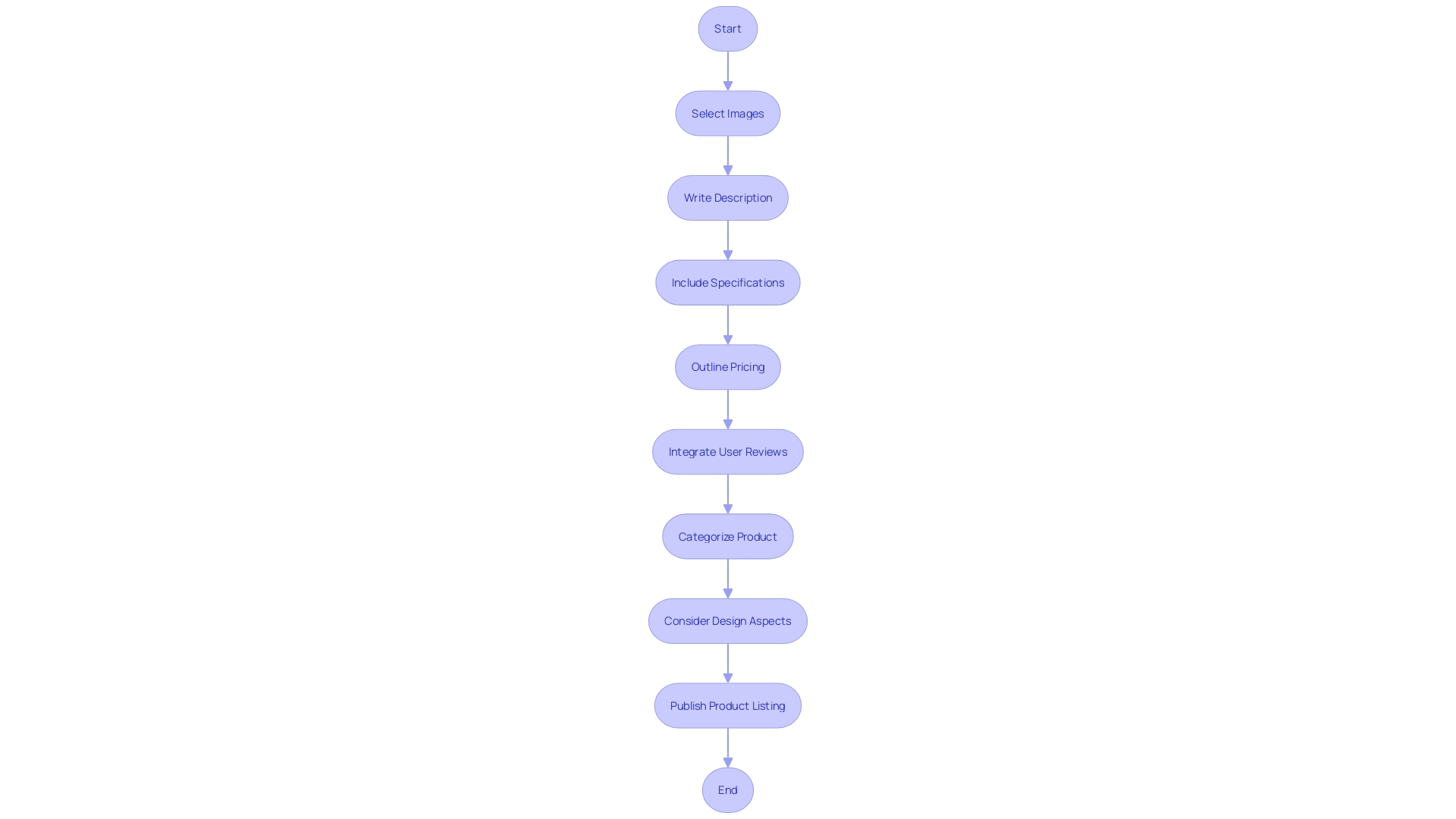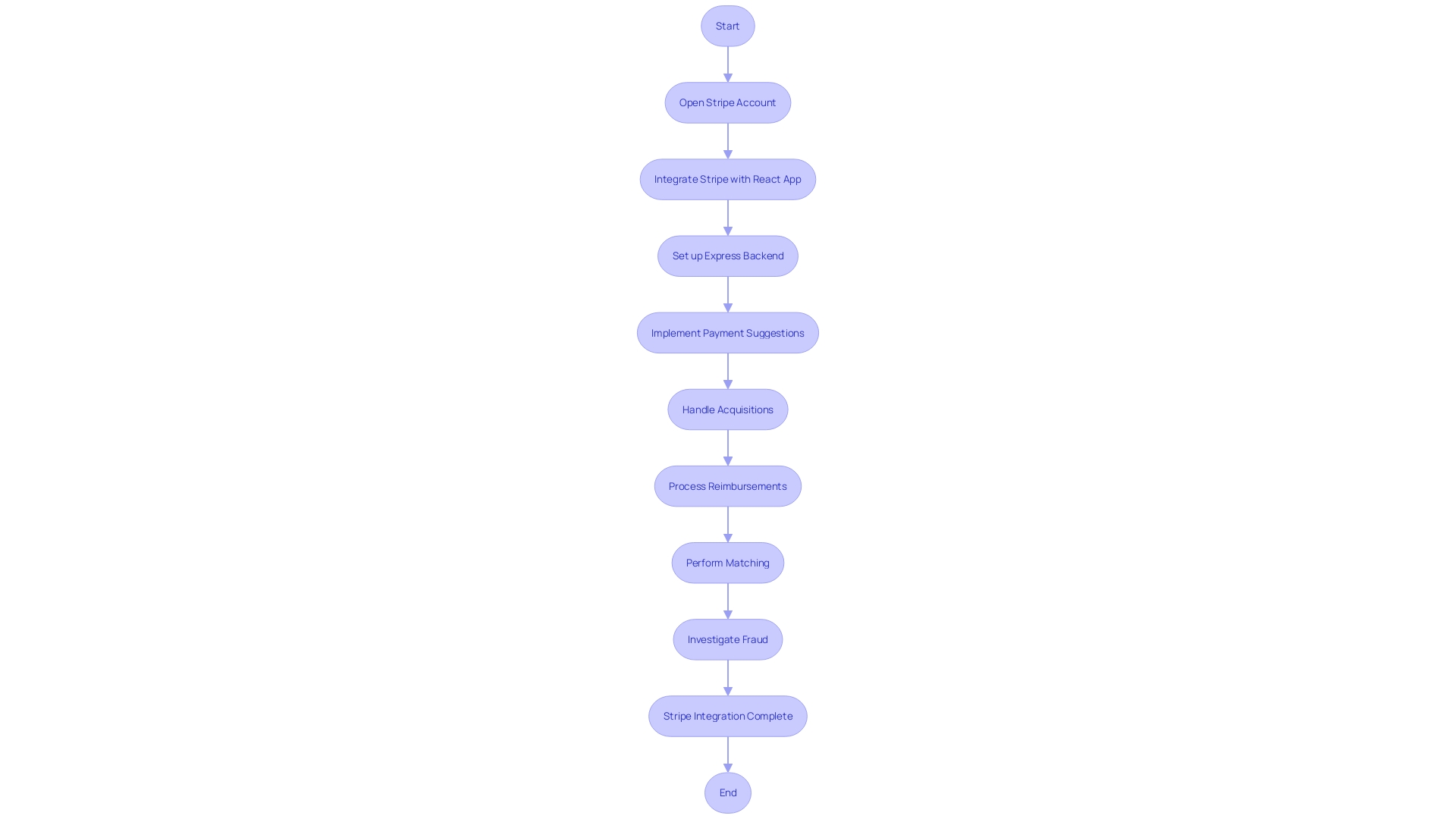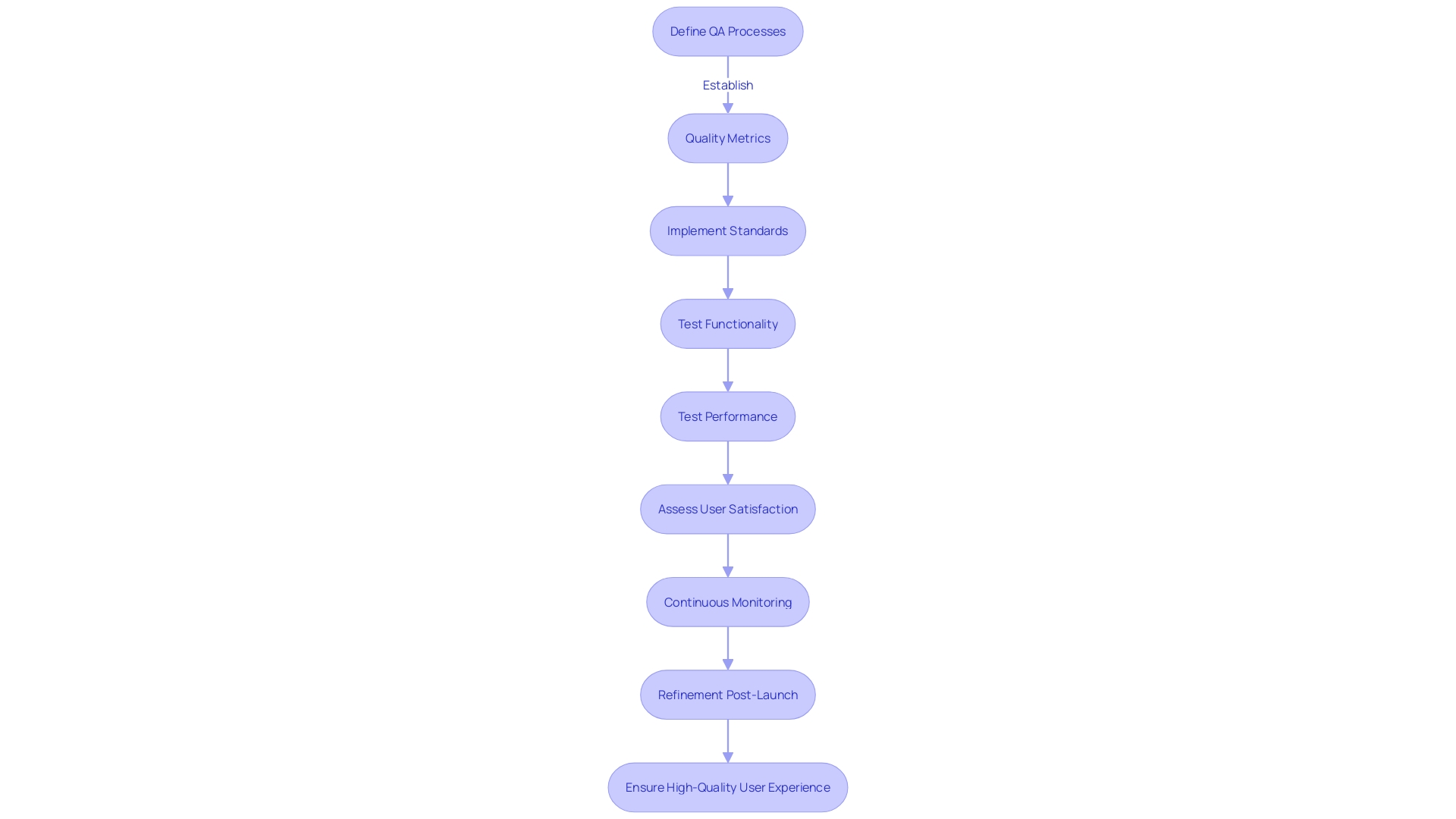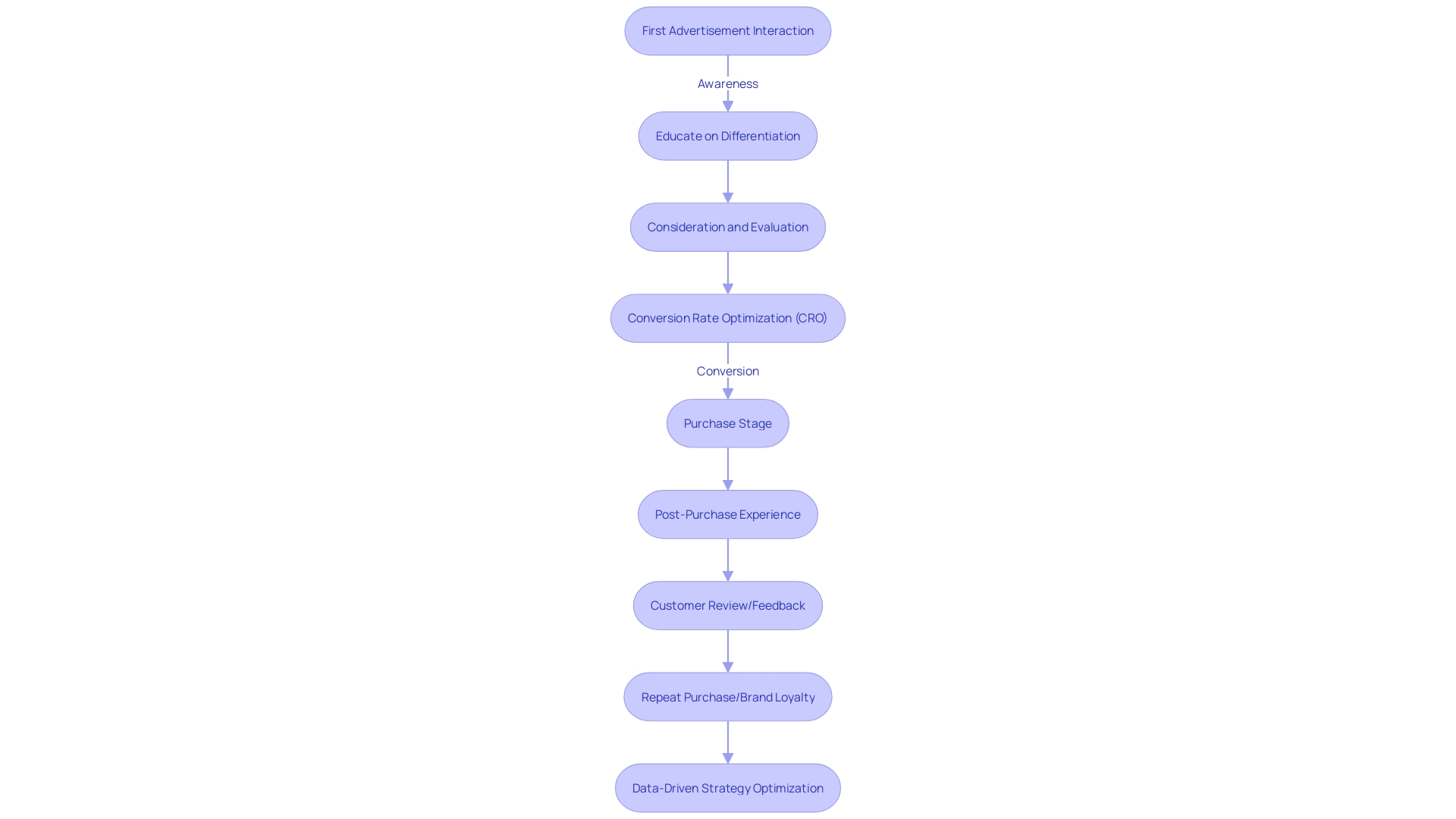Introduction
In the dynamic world of e-commerce, building a successful web application involves a multitude of factors, from understanding your target market to integrating third-party services. To create a user-centric platform that captures attention and drives sales, it's essential to navigate the complexities of choosing the right e-commerce platform, designing a customized site, and building compelling product listings. Additionally, setting up secure payment gateways, integrating third-party services, and thoroughly testing your site are crucial steps in ensuring a seamless customer experience.
Continuous upgradation and maintenance, along with prioritizing website security and scalability considerations, are key to staying competitive in the evolving digital landscape. Finally, harnessing the power of analytics and performance monitoring allows you to fine-tune your strategies and elevate your e-commerce web application to new heights. By following these expert recommendations, you can build a strong foundation for success in the fast-paced world of e-commerce.
Understanding Your Target Market
Developing an ecommerce web application that focuses on the needs of your target audience requires a thorough exploration of comprehending your potential clientele. This begins by utilizing data science to analyze the wealth of information collected from interactions across various touchpoints in their online journey. By analyzing data from advertisements to product reviews, ecommerce retailers can sculpt a detailed portrait of their consumer personas, identify their purchasing patterns, and discern which channels effectively guide them through the decision-making process.
Using this data-driven approach not only customizes the user journey to meet client expectations but also identifies specific chances to reduce cart abandonment and enhance client loyalty. Intertwining demographic and psychographic data with behavioral insights ensures a seamless and personalized shopping experience for each visitor. As the digital market landscape evolves, informed by industry benchmarks and expert analysis, staying ahead means continuously refining your web application to align with the latest consumer trends and preferences.

Choosing the Right Ecommerce Platform
Navigating the myriad of ecommerce platforms to build a web application involves more than just a cursory glance at features and pricing. It's essential to delve into aspects like scalability, which determines if a platform can grow with your business. Security measures are crucial to, ensuring data is protected during transactions. Customization options can set your storefront apart, while integration capabilities allow for seamless connection with other necessary business tools. Most importantly, the platform must be easy to use, not only for clients but also for your team who will handle the backend operations.
Shopify stands out as a robust solution that powers a significant portion of global commerce, with more than a half trillion dollars in sales attributed to its platform. Its reputation for speed, flexibility, and scalability makes it a prime candidate for both burgeoning startups and established, complex enterprises. This platform has garnered recognition as an industry leader in digital commerce, a testament to its efficacy, as noted by Gartner.
Data science is transforming ecommerce by offering valuable insights through interaction data. This valuable information assists in crafting precise consumer personas, understanding purchasing habits, and determining effective mediums for customer acquisition and retention. Employing data science strategies can significantly diminish churn rates and cart abandonment, thereby bolstering the bottom line.
When it comes to open-source alternatives, the top 12 platforms for 2024 offer a range of options, from feature-rich and user-friendly interfaces to cost-effective solutions. These platforms cater to the diverse needs of small businesses, ensuring there's a suitable match for each unique business model. The challenge lies in selecting a platform that aligns with your business goals without overburdening you with complexity or unwarranted expenses.
As ecommerce continues to expand, with a substantial portion of sales conducted via mobile devices and desktop computers, the choice of the right platform is critical. Whether your focus is on selling beverages, electronics, or any of the 14 different markets within ecommerce, the platform you choose will be the foundation upon which your online presence is built. It's a decision that requires careful consideration, informed by the latest industry trends and data.
Designing and Customizing Your Ecommerce Site
Building an outstanding ecommerce platform entails more than just technical expertise; it necessitates a profound comprehension of your brand's identity and the skill to transform that into a digital encounter. The right theme or template is your starting point, one that resonates with your brand's ethos and offers a seamless, intuitive interface. Customization is key—integrating your brand's unique colors, fonts, and imagery to create a consistent and recognizable online presence.
Take into account the approach of the Ford Foundation, which involved generating immersive web encounters to narrate stories and back their mission. They employed WordPress' block editor to build intricate projects like Reimagine Recovery, enhancing engagement through a more equitable narrative post-COVID-19. Similar focus on detail and customer experience can transform your ecommerce site into a platform that not only captures attention but also sustains it.
Responsive design is no longer optional, with over half of web traffic coming from mobile devices. People expect websites that are mobile-friendly and will leave ones that fail to meet that expectation, as shown by the astonishing fact that 79% of individuals in the United States are more inclined to revisit and share mobile sites that have a user-friendly interface. A mobile-responsive site is not just about avoiding frustration; it's about capitalizing on the 74% of individuals who are more likely to revisit and the 67% who are more likely to make a purchase.
Your product showcases need to be as compelling as your design. High-quality images and engaging descriptions are essential for presenting your products in the best light. Draw motivation from Jellyfish, a software frontrunner that upgraded its website to align with the sophistication of its products, guaranteeing that visitors' interactions on their site were as smooth as those offered by their tools.
In the dynamic landscape of ecommerce, staying abreast of trends is crucial. Agencies such as Numiko are forecasting that motion effects and dynamic solutions, like animated text, will persist in captivating users, leading to an engaging experience that not only provides information but also entertains.
Ultimately, your ecommerce site is a digital environment engineered to facilitate interactions and transactions. It should evolve alongside your business, adapting to new trends and customer expectations, while firmly rooted in the essence of your brand. It's not just about being online; it's about being impactful, memorable, and above all, user-centric.
Building Product Listings and Web Pages
Crafting compelling product listings and intuitive web pages is a cornerstone of e-commerce web application development. Ensure each product page is comprehensive, with crisp images, detailed descriptions, specifications, and pricing clearly outlined. Integrate user reviews and user-generated content to foster trust and provide valuable insights to prospective buyers. Categorize products into clearly defined categories and subcategories to optimize the browsing process. Additionally, design web pages that concisely convey your company's ethos, shipment guidelines, return policies, and channels for customer engagement.
Employ SEO best practices to enhance your product listings and web pages' discoverability, aiming to secure top rankings in search results and drive organic traffic. Remember the importance of a well-organized product landing page, which not only enhances the experience but also acts as a crucial conversion touchpoint. Remember, a meticulously designed landing page can be as appealing and effective as a major Hollywood star, capturing user interest and leading to increased sales conversions. As we approach 2024, keeping up with online business trends and adjusting to the ever-changing digital marketplace is crucial to sustain and expand your online presence.

Setting Up Payment Gateways and Inventory Management
In the ever-changing realm of online business, establishing secure and dependable payment gateways is not only a choice, but a requirement. Opting for trusted providers like PayPal, Stripe, or Authorize. Net can significantly enhance the trustworthiness of your platform. Stripe, in particular, has emerged as a unified payment service provider (PSP), streamlining the payment process across different geographies and offering a customer-centric experience. Incorporating Stripe into your online business platform requires a careful procedure that involves payment suggestions, acquisitions, reimbursements, matching, and fraud investigation, ultimately focusing on the user's convenience.
Effective inventory management systems are equally important in the online business equation. They ensure real-time tracking of product stock levels, preventing the possibility of overselling and enabling automated inventory updates. This direct approach to inventory management not only streamlines order fulfillment but also plays a crucial role in maintaining client satisfaction.
As the e-commerce landscape continues to evolve, businesses are realizing the importance of a seamless checkout process. With cart and checkout abandonment posing significant challenges, it's crucial to enhance the payment process to retain customers. According to industry expert Volodymyr Soska, the certification of payment processors can be a time-consuming endeavor, yet it's a vital step toward fraud prevention and maintaining a secure transaction environment.
Moreover, the rise of social commerce is redefining the shopping experience, with platforms like TikTok and Instagram facilitating the entire purchase process within their ecosystems. This trend emphasizes the necessity for online businesses to embrace payment infrastructures that can support such diverse and evolving shopping behaviors.
To keep up with the fast-paced growth in digital payments, which is projected to see a significant increase by 2027, businesses must prioritize the integration of robust payment solutions. It's not merely about accepting payments but also about offering a secure, privacy-conscious environment for users, as evidenced by statistics pointing out that 97% of applications are susceptible to cyberattacks due to vulnerabilities in open-source code. Implementing a thorough 7-point security checklist can strengthen your online business infrastructure against such threats, ensuring both your company's and clients' data stay safeguarded.

Integrating Third-Party Services
To enhance the efficiency and effectiveness of your online business web application, consider the strategic integration of third-party services. Utilizing advanced functionalities such as CRM systems, email marketing platforms, social media tools, and live chat services can significantly streamline your marketing initiatives, enhance client engagement, and elevate your support services. An example of such integration is the innovative label system, which facilitates document management and editing across different teams. This system exemplifies how tailored third-party services can meet specific business requirements, thereby optimizing operational workflows.
Furthermore, the integration of a Payment Service Provider (PSP) like Stripe exemplifies the transformational power of APIs in e-commerce. It showcases a synchronized payment ecosystem that covers various system aspects from billing to fraud analysis, all focused on delivering an outstanding client satisfaction. Similarly, the advent of checkout-free stores, such as the recent Zippin technology-powered outlet at Dublin Airport, showcases the seamless integration of APIs, where customers enjoy a hassle-free shopping experience by simply scanning their payment card.
APIs have solidified their role as the linchpins of modern software development, with over 24,000 APIs listed on ProgrammableWeb and more than 2 million API repositories on GitHub. This underlines the importance of APIs in creating sophisticated, interconnected applications that cater to the evolving needs of users and businesses alike. By choosing third-party services that align with your online business objectives and ensuring their smooth integration, you can develop a strong web application that is both dynamic and customer-focused.
Testing and Launching Your Ecommerce Site
Quality Assurance (QA) is more than a checkpoint before launch; it's a comprehensive strategy to ensure your e-commerce web application stands out in a competitive marketplace. It entails thorough testing of different aspects, like functionality, performance, and user satisfaction, to prevent any possible problems that could diminish a smooth journey. A strong QA process includes a range of activities, including defining processes, establishing quality metrics, and implementing standards throughout the development lifecycle to ensure a consistent and high-quality user interaction.
In the world of online business, the satisfaction of the buyer is of utmost importance. The case of Elkjop, a leading electronics retailer in the Nordics, demonstrates the importance of optimizing the online experience to match the trust and expertise that individuals find in-store. Their approach to placing the client at the core of their omnichannel strategy emphasizes the importance of a dependable and user-friendly online presence.
Incorporating continuous testing methodologies, unlike traditional testing done post-development, allows for the identification and resolution of defects in real-time, thereby reducing costs and enhancing reliability. This proactive testing approach should encompass everything from the checkout process and payment gateways to product search functionality, mirroring the meticulous nature of in-store customer service.
Launch readiness is confirmed when analytics and customer feedback signal that the online shopping site is performing flawlessly. However, post-launch, it's essential to remain vigilant. Continuously monitoring site performance and employing data analytics is crucial in identifying trends and making informed decisions to further refine the user experience.
As we envision the future of online business, the incorporation of artificial intelligence and innovative tactics will grow in significance in capturing customers' interest in a market flooded with content. Thus, guaranteeing your online trading system is not only operational but also groundbreaking is crucial to continuous expansion and achievement in the changing digital environment.

Continuous Upgradation and Maintenance
To guarantee your online business web application stays competitive and secure, it's crucial to adopt a proactive approach to development. This includes embracing modernization strategies such as application audits and performance monitoring to pinpoint what's working well and which areas require enhancements. By leveraging automated testing, you can streamline the upgrade process and minimize the manual effort, reducing the risk of introducing errors during updates. Consistently incorporating new features and enhancing performance not only meets the changing preferences of consumers but also tackles the growing trend of blending online and in-store shopping experiences. With the online shopping market rapidly expanding, spanning across diverse markets from food to household essentials, staying ahead with a robust, user-centric platform is key to succeeding in the digital economy. Moreover, data backups and strict security measures are essential to protect against risks, guaranteeing that your online business application is a dependable and credible digital resource for both your company and its patrons.
Ecommerce Website Security and Scalability Considerations
For e-commerce businesses, the security and scalability of their online presence are paramount. Security is not just about safeguarding data; it's a vital element of trust and business continuity. Implementing SSL certificates, secure payment gateways, and regular security audits lays a strong foundation for customer confidence, preventing data breaches that can significantly impact a business's reputation and bottom line. According to industry insights, 97% of software applications use open-source code, which often contains vulnerabilities. This makes comprehensive security measures, including the best patch management software, necessary to safeguard against a spectrum of cyberattacks.
Scalability is equally important, ensuring that the online business platform can handle increased traffic and product range expansion without compromising performance. Drawing inspiration from PayPal's early days, which saw a milestone of one million transactions a day, it's clear that strategic investments in infrastructure are vital to support rapid growth. For new online business ventures like the one in Africa, considerations of low-latency, fault tolerance, and high availability are essential, even on a limited budget. The infrastructure design must also include robust monitoring and logging to preemptively address issues.
Additionally, the digital community, as exemplified by Chess.com's achievement in linking more than 150 million individuals, highlights the significance of a reliable IT infrastructure that adjusts to user growth. This is not just about supporting games but nurturing the growth of communities around the globe.
In today's digital landscape, where companies like Google are constantly refining their policies to combat malicious software and compromised sites, it's evident that maintaining a secure and scalable online business platform is a dynamic and ongoing process. Retailers are now expected to prioritize cybersecurity, making it a standard practice for success. By adopting the proper strategy, an online selling platform can offer smooth customer experiences that promote engagement and expansion, similar to the virtual realms mentioned in the sector, linking individuals, locations, and objects in a secure, reliable, and flexible way.
Analytics and Performance Monitoring
Utilizing the potential of analytics and performance monitoring is essential for enhancing your web application for online business to new levels. By integrating sophisticated analytics tools like Google Analytics, you can dive deep into user behavior, trace conversion pathways, and meticulously gauge your website's performance. The insights gained from this data are priceless, allowing you to create data-based strategies that optimize every aspect of your online business.
Consider the journey that individuals undertake, from the first advertisement interaction to the post-purchase review. Each touchpoint is a treasure trove of data, ripe for analysis. This wealth of information empowers you to sculpt a nuanced understanding of your consumer personas, their purchasing tendencies, and the marketing mediums that effectively shepherd them through the decision-making journey.
In the competitive arena of e-commerce, retailers who leverage data science forge a clear advantage. By utilizing this data to minimize operational expenses and strategically focus on both potential and repeat clients, they not only improve user satisfaction but also strengthen their financial performance. It's not just about acquiring customers; it's also about understanding the prompts that mitigate basket abandonment and customer churn.
Performance testing is not a mere checkbox in the development process; it is a critical practice that assesses a system's speed, scalability, and stability. It's about ensuring that, even during peak loads, your application remains swift and responsive. After all, in a digital era punctuated by instant gratification, performance can be the defining factor between success and failure.
Consider the case of a groundbreaking checkout-free store in Dublin Airport, leveraging Zippin technology to offer a frictionless shopping experience. This innovation exemplifies the future of retail, where performance and user convenience are paramount.
Remember, analytics is not just about what's happening on your site. It's about comprehending the entirety of your campaigns and marketing strategy, ensuring that you're not just driving traffic but also nurturing a devoted base. By closely monitoring key performance indicators (KPIs) such as website traffic, average order value, and customer acquisition costs, you can continuously refine your approach and maintain a trajectory of growth and improvement.

Conclusion
In conclusion, building a successful e-commerce web application involves understanding your target market, choosing the right platform, designing a customized site, and creating compelling product listings. Setting up secure payment gateways, integrating third-party services, and thorough testing are crucial for a seamless customer experience. Continuous upgradation, maintenance, and prioritizing website security and scalability are key to staying competitive in the evolving digital landscape.
Understanding your target market is essential for tailoring the user experience and increasing customer retention. Choosing the right e-commerce platform, like Shopify, ensures scalability, security, and customization options. Designing a customized site with responsive design and high-quality product showcases captures attention and sustains user engagement.
Crafting compelling product listings and intuitive web pages is vital for driving sales and conversions. Setting up secure payment gateways and effective inventory management ensure a seamless checkout process and customer satisfaction. Integrating third-party services like CRM systems and email marketing platforms streamline marketing initiatives and enhance customer engagement.
Testing and launching your e-commerce site with a comprehensive quality assurance strategy ensures a seamless customer journey. Continuous upgradation and maintenance, along with prioritizing website security and scalability, keep your e-commerce platform competitive and secure.
Harnessing the power of analytics and performance monitoring allows you to make data-driven decisions and fine-tune your strategies. By following these expert recommendations, you can build a strong foundation for success in the fast-paced world of e-commerce. Prioritizing customer-centricity, security, scalability, and continuous improvement will help you stay competitive in the evolving digital landscape.





